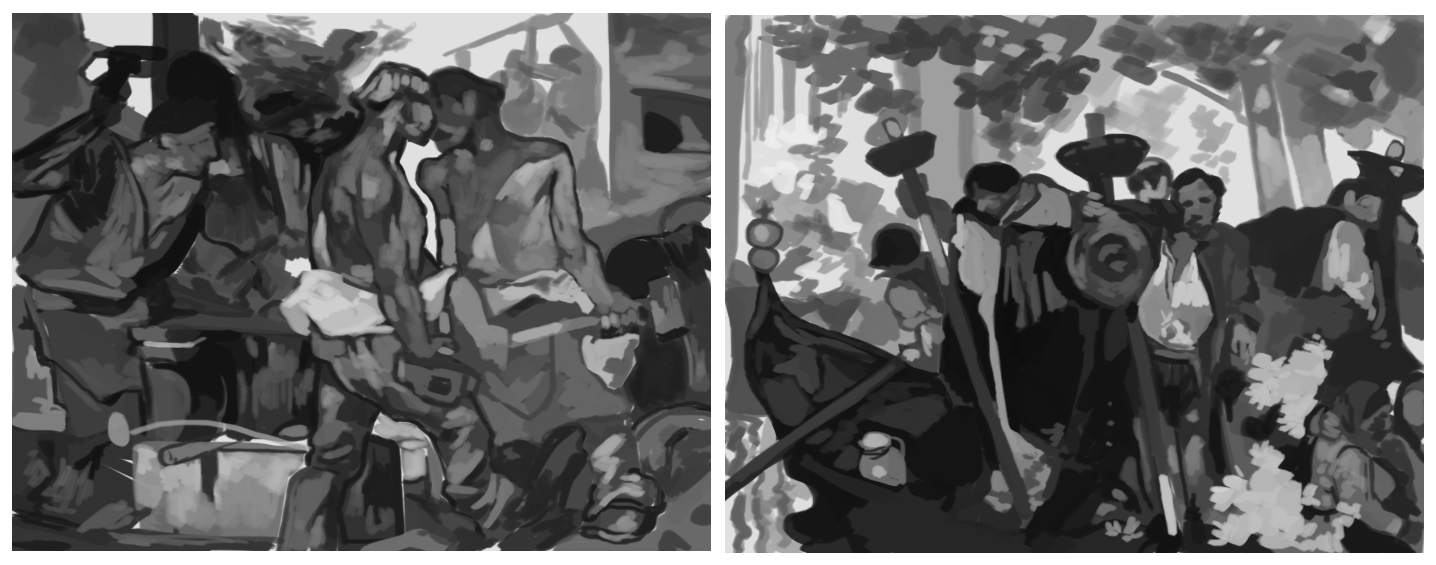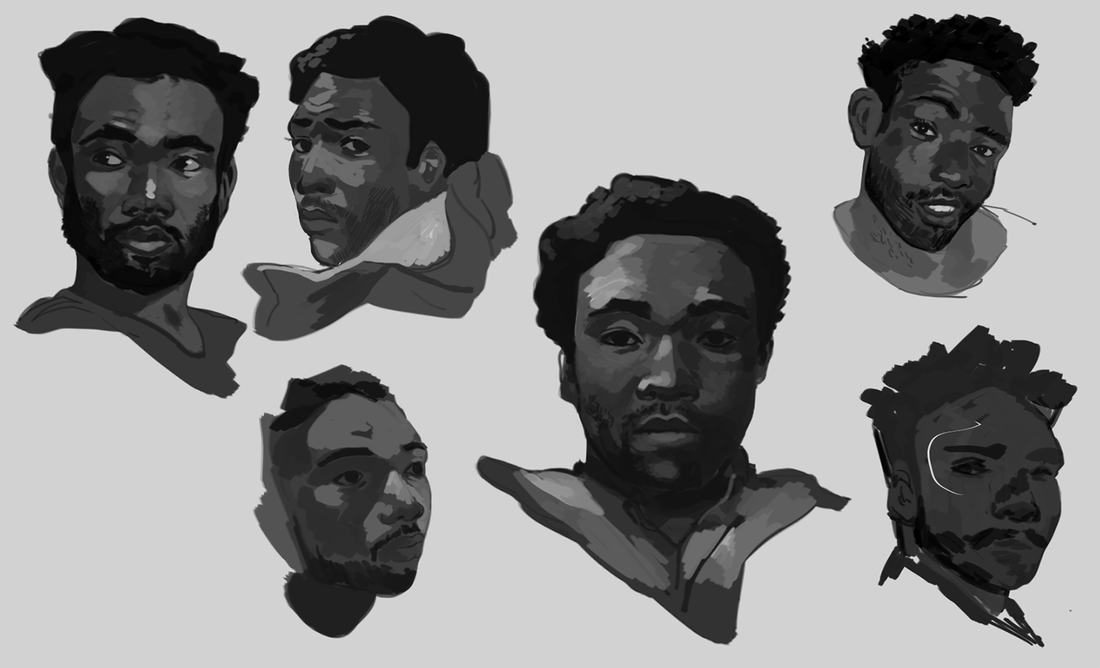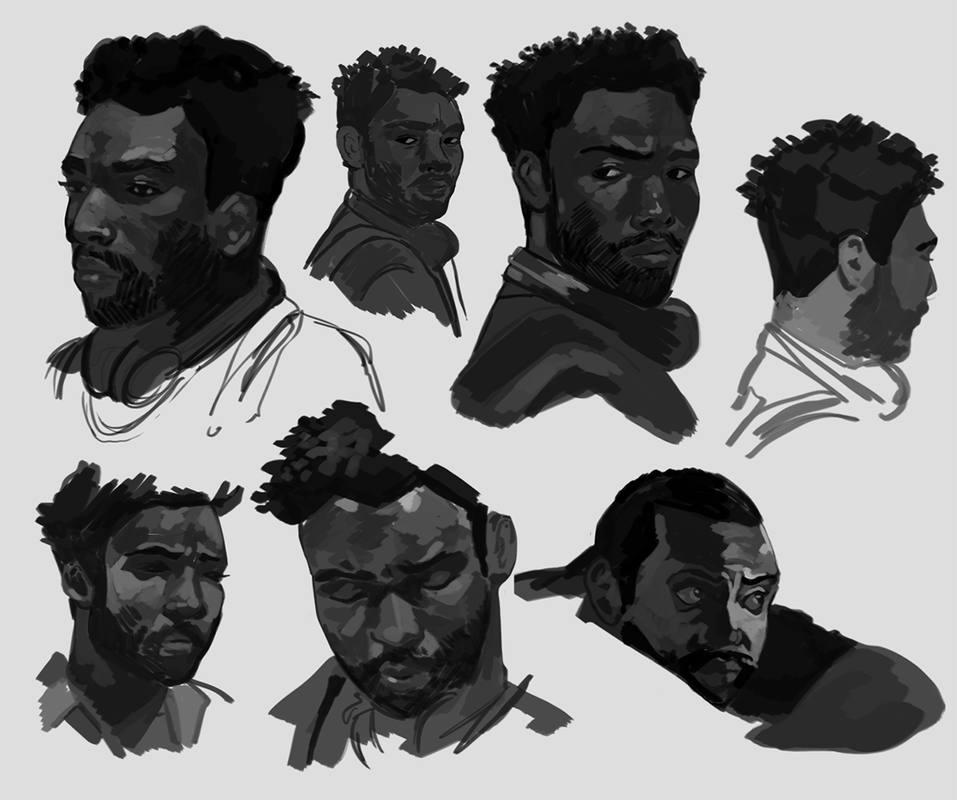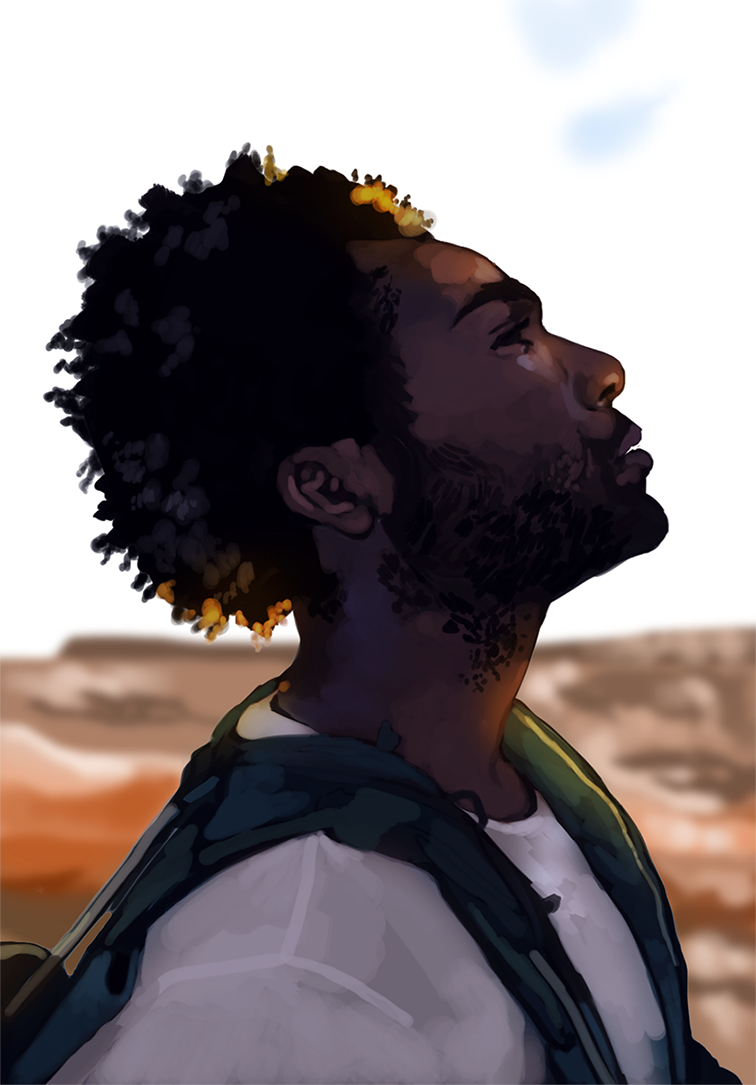|
I've been rifling through more of my old studies and personal thumbnails, analyzing what I've learned over the years with October right around the corner. These ones are all the way back from 2015, a little scratchier and more middle-of-the-road value-wise than I do now. Nonetheless, it's useful to analyze the areas where you've gotten stronger, as well as understanding where your skill starts to peter out and improve more slowly. Moving backwards is still movement! I've spoken about Frank Brangwyn before and how he's been a major fine art inspiration of mine. His ability to somehow create chaotic and extremely simple compositions is endlessly fascinating, which is to say nothing of his lighting. Buttery and bold, he's able to craft out a figure's weight, age and personality with just a few deceptively simple strokes. I've done enough traditional and digital studies over the years that I feel comfortable getting a lot down with very little. Silhouettes, in particular, are a very reliable way of carving out what you see. Moving forward I want to keep polishing up these areas. I want to paint faster, create more stunning compositions and improve my technical perspective. I also want to get comfortable all over again with being sloppy and loose.
0 Comments
Like the sun rises and sets, there is always hubbub in the art community around copying...and rightfully so. No self-respecting artist wants to be a glorified scanner, nor should they want to make a mockery of another artist's work for short-term gain. Then there's the whole 'getting sued' thing. The word 'copying', however, should come with an asterisk: there's a big difference between mindless copying and studying. Any artist that wants to improve on a technical and personal level needs to know this. To study another's craft is to go in with the intent of bettering yourself. Of carving out your unique voice. This can be strengthening your composition by asking how, say, a commercial illustrator makes their work so readable. This can be improving your technique, such as figuring out a fine artist's strong grasp on light and shadow (though you should be studying from life, too). Perhaps your favorite artists have a certain style that just speaks to you. All are valid reasons to pick up a pen and do some homework. That doesn't mean mindlessly copy and hope for the best. Studying is a conscientious act, with a goal to achieve after a set of repetitions. Studying from just one artist can increase the risk of copying, too, which is an easy enough problem to fix: have more than one inspiration. Just like a healthy diet can't solely rely on carbs, so too does a healthy artistic foundation need a variety of sources to pull from. Growing up I was surrounded by inspiration. I was heavily influenced by Pokemon, Final Fantasy and more books than I could shake a stick at. Jerry Pinkney, Janell Cannon, Mary GrandPré, Yoshitaka Amano and Pete Lyon are all incredible illustrators who did so much to capture my imagination (and still do). To this day, I have more artistic inspirations than I can count. Commercial illustrators, fine artists, musicians, game designers, fashion designers. For now, I'm going to look at some studies I did in 2017 and 2018 of two of my favorite painting masters: Frank Brangwyn and Jeffrey Catherine Jones.
No art is wasted. Yes, even the art that turned out so wonky you want to pretend it never happened.8/12/2019 I actually uploaded a few of these here back in 2017, but also left a few more buried in my art folders. For brevity's sake I'm going to dump all my studies of Donald's Glover's face (and one Bryan Tyree Henry) here. I've grown tired of being embarrassed about older work, studies that turned out funny or sketches that were wildly off-base from the original idea. What's the point? Take a look at these, where I go from really knowing how to draw faces to not having a damn clue all in the same session. You can see me studying the same angle several times, because sometimes you're just not getting the hang of the thing. Maybe it's a subtle expression, maybe you're just warming up and can't draw right yet. No matter what, you keep going until you push through that wall. Not giving up really is 90% of the artistic process. I watched a few clips from Atlanta (before watching full episodes with one of my Discord groups) to get more candid angles. A good exercise is to let a video play and pause at random. There's nothing wrong with studying your favorite angles, of course, but it can help to understand how the face works when it turns or stretches in ways you don't expect. Keep an eye on that wonky one in the bottom left... ...because you can see where I started having a little trouble. Donald Glover had such a simple 3/4th angle here, yet I had a tough time capturing the subtleties of his expression. Instead of deeming it a lost cause, though, I warmed up on some different faces, then returned to it. Eventually I got close enough to deem the study a success. I then wrapped up the session with a color study based off one of his photoshoots. This one ended up looking a lot more 'marker-like' than most of my work, which I found interesting. It's not quite the finish I go for, but, eh. That's part of the process. You learn about what you want to do and what you don't want to do. Like fertilizer, art is never wasted. There's more behind-the-scenes material coming up. Stay tuned!
|
AuthorHere I post WIPs, sketches, speedpaints, thumbnails and anything else thrown into the veritable stew of artistic process. Archives
January 2021
Categories
All
|
ServicesBook Covers
Illustration Character Art Portraits Packaging Art Concept Art |
AboutCommercial illustrator and designer currently available for short-term and long-term freelance work.
|
© COPYRIGHT 2015. ALL RIGHTS RESERVED.
|




 RSS Feed
RSS Feed